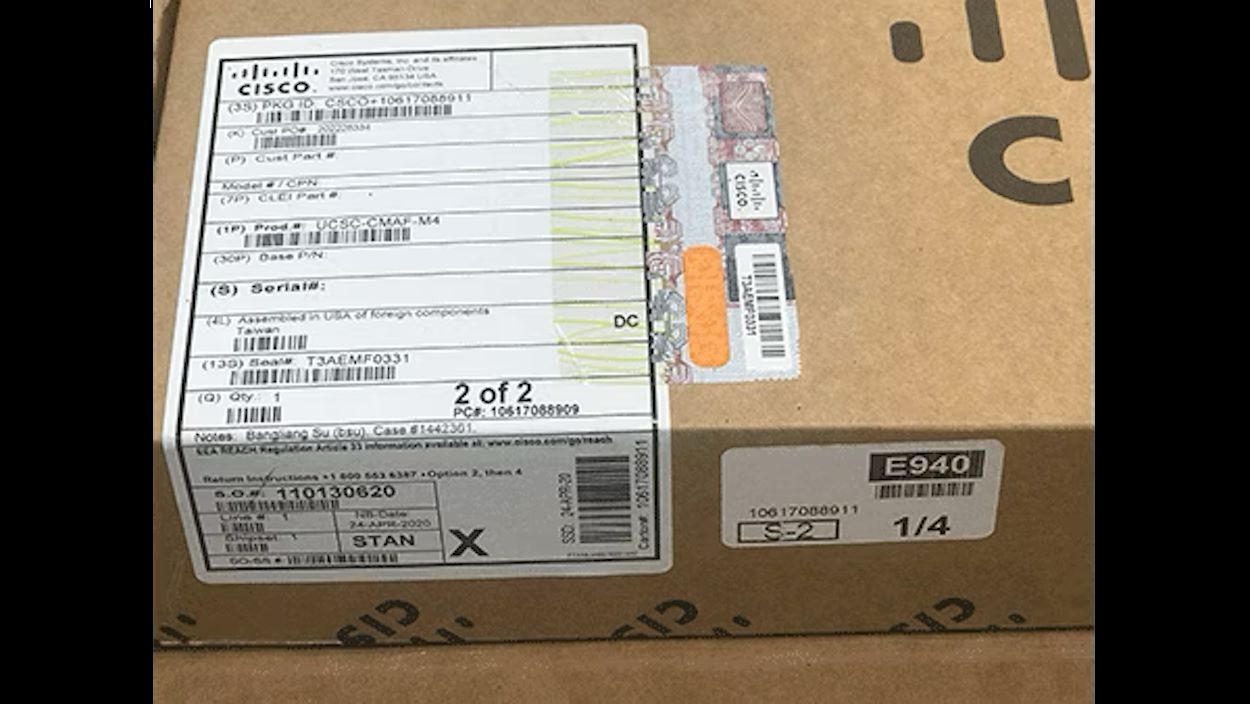



While all counterfeit goods potentially pose a risk for consumers and companies, that risk becomes amplified when we talk about products made by Cisco, one of the largest technology companies in the world, best known for its networking products.
Cisco has been fighting counterfeiters for almost two decades. In 2003, it sued Chinese telecommunications rival Huawei for copying its router software. In 2008, international law enforcement seized over 400 counterfeit Cisco network hardware devices, trafficked between the US, Canada and China, with an estimated retail value of over $76 million. In 2010, the US Federal Bureau of Investigation seized $143 million worth of counterfeit Cisco networking gear.
Cisco was active in beating fraud even during the COVID-19 pandemic. It blocked counterfeiters from flooding the market with nearly 100,000 fake Cisco optical transceiver modules, forged product labels, and brochures.
These cases are just examples of the high risk and intensity of the problem. The Alliance for Gray Market and Counterfeit Abatement (AGMA) estimates that the global IT industry loses $100 billion in revenue annually to counterfeiters.
Cisco has a global brand protection department in place, comprising more than 50 people and operating in 15 countries. Heading up the team is Al Palladin, Legal Director and Head of Global Brand Protection.
The department protects the brand, helps channel partners to be competitive, protects customers, and recognises if Cisco products have been tampered with or are counterfeit. A significant focus is on mitigating risks in so-called grey markets, where products may be counterfeit, illegally upgraded, illegally imported, stolen, or sold without a Cisco warranty or by unlicensed operators. In the case of non-compliance by a channel partner, the team visits the partner, conducts a review and ensures there’s a remedy for the wrongdoing.
The Cisco team works closely with channel partners, government law authorities, and tax and customs leaders worldwide, ensuring that the intellectual property rights of Cisco are respected. It also works with Amazon Crime Unit at the digital level, which involves dealing with US law enforcement, Department of Justice, and Homeland Security, with whom Amazon is in partnership to clean up counterfeiters.
The team also works closely with US Customs and Border Protection (CBP), providing it with specialised tools, such as barcode scanners to identify counterfeit Cisco products. (CBP is allowed by law to accept technological donations for IPR enforcement use).
In one particular case, officers from CBP’s New York field office, together with import specialists from the Electronics Centre of Excellence and Expertise, and representatives of CBP’s donations acceptance programme, conducted an operation targeting shipments specific to Cisco entering through the John F Kennedy port of entry. The donated devices helped CBP personnel to accurately validate the authenticity of 49 out of 56 shipments, valued at $626,880.
Cisco has been using anti-counterfeiting technologies since 2006 to support its vigorous enforcement team, and has regularly upgraded them. The technologies include holograms, colour-shifting effects, foils, and intaglio.
Currently, Cisco uses the following labels to ensure product security and identification:
a) Carton security label – includes a hologram, a colour-shifting area changing from purple to green, and a reflective circular foil which reveals a bridge image when tilted.

Carton security label.
b) Chassis security label – carries a certificate of authenticity (COA) identity label, similar to the Microsoft label. The COA label includes a trust seal hologram, intaglio surfaces, and serial numbers in small font in the background. There is also a tamper-evident label on new chassis boxes, including a photopolymer hologram.
c) Printed circuit board assembly (PCBA) security label – using holographic and other security features.
d) Module security label – consisting of holographic features and data matrix code.
Whilst protecting physical products with anti-counterfeiting technologies, Cisco is also actively working in the digital world to fight fraud. Its Digital Fraud Prevention team takes a proactive approach by trying to intercept fraud before it starts.
In 2022, the team found a cluster of about 100 cisco.com identities being used to query data, steal information, and open support cases to manipulate customer support agents. Analysis showed the accounts had been created in the 1990s and early 2000s and had long since been abandoned. But fraudsters had been able to hijack them. Upon further investigation, the team identified some 98,000 similar accounts at risk of being hijacked. Cisco acted proactively, terminating 97,000 cisco.com accounts.
An essential function of the Cisco brand protection department is education. It takes active measures on the awareness front. Its Identity Counterfeit Platform provides specific information, including demonstration videos on the anti-counterfeit security technologies used on its products, thereby allowing consumers and other stakeholders to be able to identify genuine Cisco products.
Furthermore, customers can report and share suspected illegal or unauthorised activity on the platform. They can escalate any concerns directly to Cisco Brand Protection through an online form and provide essential market intelligence to help disrupt counterfeiters. The Cisco team reviews the reports daily and claims that all such information is handled anonymously.
Apart from the aforementioned measures, Cisco deploys and maintains a comprehensive security capability across its global supply chain, focusing on crucial threat areas, including manipulation, espionage and disruption.
The company has developed a veritable authentication eco-system, including risk assessment, best practice training, understanding counterfeit trends, rigorous quality checks for suppliers, traceability linking of all electronic parts to a specific PCBA, deployment of customised Cisco anti-counterfeit technology, controlled scrap processes, and a longstanding commitment to encouraging the reporting of security vulnerabilities and suspected counterfeit products by customs, suppliers and channel partners.
Moreover, Cisco leads and contributes to several international standards focused on reducing counterfeit electronics parts across the information and communications technology industry (eg. ISO 27036 on supplier relationships, and ISO 20243: the Open Trusted Technology Partner Standard).
To learn more about this comprehensive and layered approach, visit https://www.cisco.com/c/dam/en_us/about/doing_business/trust-center/docs/cisco-counterfeit-electronic-part-detection.pdf.